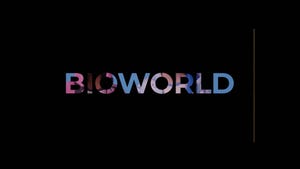]> Litigation can result in expanded artists' rights to depict celebrities without permission or royalty payments. What do the Three Stooges, Tiger Woods, and
April 6, 2018

]>
Litigation can result in expanded artists' rights to depict celebrities without permission or royalty payments.

What do the Three Stooges, Tiger Woods, and Cheryl Tiegs have in common? All have been involved in litigation in which they tried to limit artists' ability to use their likeness. Ironically, the results of these cases ended up expanding an artist's right to depict celebrities without permission or the payment of royalties.
Artists who incorporate celebrities' images in their artwork, often are on the receiving end of cease-and-desist letters from attorneys representing celebrities or their estates. The letters received state, in no uncertain terms, that the artists are violating the celebrities' rights. They are convincing and, to the uninitiated, frightening. They usually have the desired effect of scaring the artists receiving them to either remove the celebrity image, pull the artwork altogether, or pay a royalty.
As an attorney who represents both celebrities and artists, I have had the opportunity to explore the issue from both sides of the equation. While in many, if not most, cases, the celebrities will be correct in their position, it is not always the case. The right of publicity, in a simplified format, can be stated as the right of a person to control the commercial use of his or her name or likeness. However, several exceptions have developed over the last several years. Licensing rights that stemmed from the rights of publicity are based on a mix of laws. Unlike copyright and trademark laws, which are federal and have a degree of uniformity, rights of publicity are based on state laws. Each state's approach can be and often is unique. The overall effect is a patchwork quilt of laws and interpretations. Often, the results of the case against an artist will hinge not on the art or celebrity but rather where the lawsuit has been filed.
To evaluate a right of publicity claim, one would have to look at 34 separate state laws or common law cases to determine if there were an infringement in a particular jurisdiction. Every state's law differs greatly in scope of protection, who is eligible to claim the right, if it is a right descendable to the celebrity's heirs, and the duration of the right. Each state has general exceptions. For example, use of a celebrities' likeness in a news story, in regard to public affairs, in a sports broadcast, and in a political context all can be done without permission of the celebrity.
California has an exclusion for "single and original works of art." Does this mean a single work of art that is also original, or is the statute creating two classes of excluded works: one, a work embodied in a single manifestation; and the other, a separate category for "original" works of art? What would a non-single yet original work be? An example might be found in American import laws. The U.S. does not impose a tariff on imported original works of art. Under U.S. Custom's regulations, an original work of art can be a multiple. For example, sculptures can be part of an edition of up to 10 and still be considered an original work of art. Therefore, it is OK for an artist to paint or sculpt a one-of-a-kind of a celebrity without permission and perhaps a small limited edition is permitted, as well. There are no cases on this, yet, but there probably will be.
Cheryl Tiegs
Back in 1993, a sculptor in New York was commissioned to cast an elephant for a wildlife preservation project. To prove the process would not be harmful to the elephant, super model Cheryl Tiegs, who was working with the environmental group on the project, agreed to be cast to test the process. A life-size body cast of Cheryl Tiegs was made. It was brought over to Tiegs' apartment to show her. A workman dropped something on the cast, destroying it. The sculptor sued for the loss of revenue he anticipated from the sale of the sculptures depicting Tiegs' torso. Tiegs filed a motion to dismiss the case saying she would not have granted the sculptor permission to sell the sculpture, and without her permission, the sculptor would have been unable to sell the sculptures embodying her likeness. This rendered the fact that the sculpture was destroyed irrelevant as it could never have been exploited.
The court held that, "Although a person's right of publicity is protected under New York law, it is a very significant right, it must fall to a constitutionally protected right of freedom of speech. This includes nonverbal expression that covers works of art such a sculptures." The court went on to state that the statute did not apply to "plaintiff's actual or intended acts," that "an artist may make a work of art that includes a recognizable likeness of a person without her or his written consent and sell at least a limited number of copies thereof without violating his or her right of publicity in New York."
Tiger Woods
Two years ago in Ohio, Tiger Woods tried to stop an artist from selling prints depicting his playing at the Masters. Woods brought a claim based on trademark law and his right of publicity. The judge in this Federal court action first found that Tiger Woods had not established his likeness as a trademark. The law set out several criteria for the establishment of the trademark, and Tiger Woods did not satisfy them. Simply being well known and recognizable does not in and of itself create a trademark in one's likeness. The court found that even though Tiger Woods had a legitimate trademark in his name, that did not translate into the use of his likeness as a trademark.
After dismissing the trademark claim, the court turned its attention to Tiger Woods' right of publicity claim. The court cited Supreme Court cases, which held to write a publicity right is limited under certain circumstances by the First Amendment. The artist argued his prints are protected by the First Amendment because they are works of art and did not constitute commercial speech. Rather, the work expresses, "the majesty of a newsworthy moment" (Tiger Woods playing at the Masters). The claim made by Tiger Woods was that the prints were "merely sports merchandise" and, therefore, not entitled to First Amendment protection. In regard to this argument, the court found the images conveyed a message and differed from a poster that merely replicated an existing photograph. The court went on to hold that paintings and drawings are protected by the First Amendment as are limited-edition prints made by the artist in this circumstance (the edition size was 5,000 prints). It also alluded to protection for photographs and sculptures. The artist prevailed and was allowed to continue selling his prints.
The Three Stooges
Fast forward to California and spring 2001. This time, an artist created a charcoal drawing of the Three Stooges and sold it as lithographs and on T-shirts. The likenesses of the Three Stooges were extremely realistic. The owner of the rights in the Three Stooges likeness sued under California law, which prevents the unauthorized use of the deceased person's likeness "on or in products, merchandise, goods or for the purposes of advertising, selling, or soliciting purchasers of product merchandise, goods, or services." The artist argued, the statute did not apply since the lithographs and T-shirts, which embodied the image, did not constitute an endorsement or sponsorship of a product. The artist also made First Amendment claims.
While the court found these claims had merit, in this instance, the court did not agree with the artist. The court adopted a version of the copyright law's fair use test and found the image was not sufficiently transformative to enjoy the First Amendment protection based on a fair use analysis. What is important for artists about this case is that the court carved out a critical exception to the right of publicity for artwork. It held that if the celebrity's likeness is just "raw material" for an original art work and it is the artistic expression that is the artwork's dominant attribute, then the artist's First Amendment rights will trump the celebrity's right of publicity. The court used Andy Warhol's portraits as an example of the type of art where the artist's contribution was paramount and the artist's rights would supersede the celebrity's right of publicity.
Final Decision
These three cases show a trend in which courts are finding First Amendment protection for artists when they are using the celebrities' images in certain artwork. However, no artist should take these cases as an invitation for the carte blanche exploitation of a celebrity's likeness without permission. That said, instant capitulation in the face of a cease-and-desist letter also may not be appropriate. These cases provide a need for a close analysis as to whether or not the celebrities' permissions are needed in regard to the exploitation of their images in art-related projects. The review must be done on a case-by-case basis.
You May Also Like






